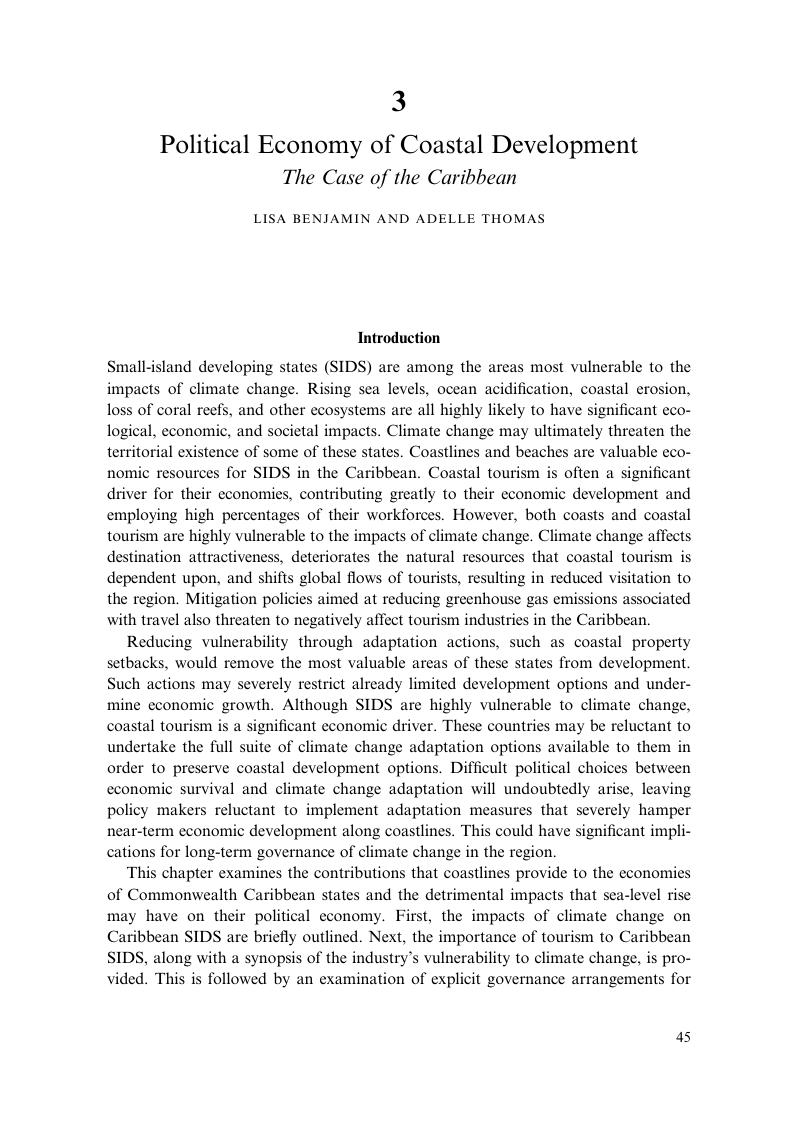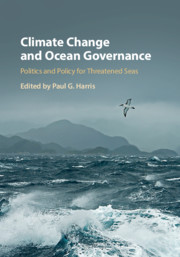Book contents
- Climate Change and Ocean Governance
- Climate Change and Ocean Governance
- Copyright page
- Contents
- Contributors
- Acknowledgments
- Part I Introduction
- Part II Vulnerable Islands and Coasts
- 3 Political Economy of Coastal Development
- 4 Coastal Development and Climate Risk Reduction in the Persian/Arabian Gulf
- 5 Adapting to Sea-Level Rise in the Indian Ocean
- 6 Coastal Risks from Typhoons in the Pacific
- 7 Ocean Policy Perspectives: The Case of Indonesia
- 8 Politics of Rising Tides
- Part III Marine Fisheries and Pelagic Seas
- Part IV Changing Polar Seas
- Part V Institutions and Law for Ocean Governance
- Part VI Policies for Ocean Governance
- Part VII Conclusion
- Index
- References
3 - Political Economy of Coastal Development
The Case of the Caribbean
from Part II - Vulnerable Islands and Coasts
Published online by Cambridge University Press: 12 February 2019
- Climate Change and Ocean Governance
- Climate Change and Ocean Governance
- Copyright page
- Contents
- Contributors
- Acknowledgments
- Part I Introduction
- Part II Vulnerable Islands and Coasts
- 3 Political Economy of Coastal Development
- 4 Coastal Development and Climate Risk Reduction in the Persian/Arabian Gulf
- 5 Adapting to Sea-Level Rise in the Indian Ocean
- 6 Coastal Risks from Typhoons in the Pacific
- 7 Ocean Policy Perspectives: The Case of Indonesia
- 8 Politics of Rising Tides
- Part III Marine Fisheries and Pelagic Seas
- Part IV Changing Polar Seas
- Part V Institutions and Law for Ocean Governance
- Part VI Policies for Ocean Governance
- Part VII Conclusion
- Index
- References
Summary

- Type
- Chapter
- Information
- Climate Change and Ocean GovernancePolitics and Policy for Threatened Seas, pp. 45 - 59Publisher: Cambridge University PressPrint publication year: 2019
References
- 2
- Cited by



